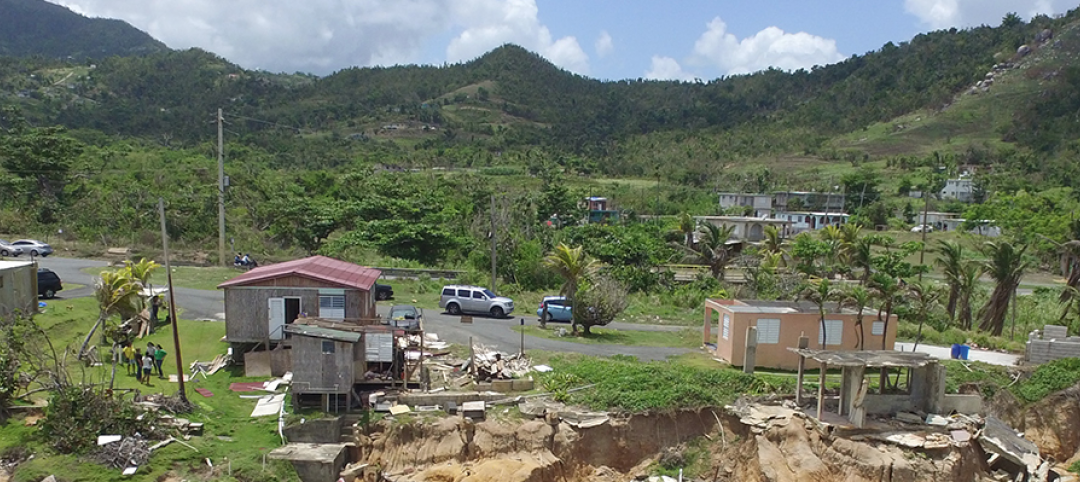Last June, Minot, N.D., received $74.3 million it was awarded in January 2016 as one of the winners of HUD’s resilience competition. The city, which was hit hard by flooding in 2011, will use that money over the next five years to reduce flood risks and improve water quality, build resilient and affordable neighborhoods, and diversify its economy.
This is part of a much larger flood-control effort that could cost up to $700 million, and involves FEMA, the Army Corps of Engineers, the state of North Dakota, and Minot, which will kick in $337 million over the next decade, says John Zakian, a former consultant with New York City’s resilience program, who now manages Minot’s National Disaster Resilience Program.
About half of the HUD money, $20 million, is financing the buyout of 170 single-family homes, and 190 total properties, along the river, tearing them down and turning that area into wetlands and flood barriers. Another $12 million was set aside for building multifamily housing, and to acquire property for a homeless shelter and downtown park, outside of the new flood plain.
Zakian says the city mandated the sale of the homes, but only had to invoke eminent domain on three houses.
Minot’s actions are further evidence that climate-induced migration—a/k/a relocation of populations at risk—is no longer off the table for municipalities as part of their disaster resilience strategies. And with FEMA’s National Flood Insurance Program already $25 billion in debt to the U.S. Treasury, rebuilding in vulnerable areas gets more financially precarious by the day.
“Eventually, people are going to have to face up to this reality,” says Rachel Minneri, who oversees AIA’s disaster assistance, resilience, adaptation, and sustainable community development programs. She points out that while FEMA doesn’t publish information about relocations, they’re actually a lot more common than is generally perceived.
Some examples of places where relocations are more than idle chatter:
- After being flooded in 2013, Boulder County in Colorado initiated a “Building Back Better” program that included buying back flood-damaged properties that would pose a future high risk, and turning those properties into undeveloped land in perpetuity. The county paid $26.8 million to acquire 46 properties, and was wrapping up demolition in September 2017;
- Hundreds of residents in Ottawa, Ont., abandoned their homes to escape record flooding in April. The city has told homeowners they could apply for government assistance to rebuild or repair one more time, and that’s it;
- Oregon school districts have been pulling schools out of tsunami zones, says Erica Fischer, PhD, PE, an assistant professor at Oregon State University who, until last August, was a design engineer with Degenkolb Engineers;
- Louisiana’s new master plan calls for paying 20,000 coastal residents to relocate. The state is currently engaged in a $48 million pilot program that includes relocating residents of 29 homes on Isle de Jean Charles, a narrow island that’s sinking into the Gulf of Mexico.
It’s worth noting, too, that only 17% of Houston-area homeowners have flood insurance, and federal disaster relief is capped at $33,000, hardly enough on its own to rebuild a destroyed house.
But convincing people to relocate is a psychological hurdle: just look at how many ignore evacuation orders, or keep returning, year after year, to regions afflicted by floods, tornados, and fires. Mandated relocation also devalues the forsaken property. And what still isn’t clear, says Josh Sawislak, AECOM’s Global Director of Resilience, is the value of such property beyond its existing primary function.
But if the government and insurers start cutting off, or even significantly reducing, dollars to rebuild and restore, resilience is going to mean relocation for a lot more at-risk Americans. “Those discussions are going to happen,” says Illya Azaroff of +LAB Architects and Experimentation in Brooklyn, N.Y., which has started downzoning coastal neighborhoods like Red Hook, and upzoning places outside of the borough’s flood plain.
Related Stories
Resiliency | Mar 7, 2019
Building for resilience - All about RELi
Sustainable design strategies create more resilient buildings. However, only truly focused purposeful resilient design strategies will create the adaptation needed.
Resiliency | Feb 27, 2019
ResilientSEE: A framework to achieve resilience across scales
Conceived in the Boston studio of Perkins+Will, the ResilientSEE team developed a resilient planning framework that can be applied to other neighborhoods, cities, and countries.
Sustainability | Oct 25, 2018
As project delivery models evolve, designers rethink their role
New York City’s newest university campus, Cornell Tech, pushes the limits of sustainable and resilient design.
Resiliency | Sep 4, 2018
It takes more than money to fund resilience
Resilient design, much like all projects in the built environment, requires funding.
Resiliency | May 17, 2018
Architects brief lawmakers and policy-makers on disaster recovery as hurricane season approaches
Urge senate passage of disaster recovery reform act; Relationship-building with local communities.
Resiliency | Feb 21, 2018
Resilience team selected to help protect a vulnerable Bridgeport, Conn., from floods
The design and construction project would perpetuate efforts that date back several years.
Resiliency | Jan 24, 2018
A luxury community in Florida mandates resilience in new-home construction
Alys Beach’s in-house GC builds to standards set by the FORTIFIED program.
Resiliency | Jan 24, 2018
Effort to develop first whole-community resilience benchmarks for buildings, water, and energy launched
Volunteers sought for committee openings.
Resiliency | Jan 17, 2018
Climate adaptation project addresses current and future climate changes in Randers, Denmark
The C.F. Møller-designed project is slated for completion in 2021.
Resiliency | Nov 15, 2017
Resilient design for waterfront buildings: a real estate win-win in vulnerable area
The developer sees resilient developments achieving top-of-market pricing, faster leasing, higher renewal, and higher occupancy rates.

















